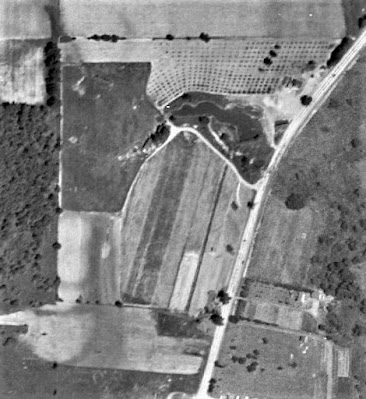Ansel Brainerd Cook (1823-1898), built a name for himself as a state lawmaker and stonemasonry contractor. He is certainly one of the best known individuals in Libertyville's history, due in large part to the fact that the historic Cook House sits prominently at the center of town.
Cook was born in Connecticut and spent his youth on the east coast. He came to Libertyville in 1845 where he met Helen Foster, marrying her in 1849. Ansel B. Cook, circa 1875. (above) (LCDM 94.34.123)
Helen Foster Cook, (1829-1881) (above) was the daughter of Libertyville's first physician, Dr. Jesse H. Foster. (LCDM 94.34.122)
In 1853, Ansel and Helen moved to Chicago. Cook was elected to serve in the Illinois State Legislature from 1863-1867. He returned to Lake County and was elected the county supervisor from Libertyville Township and served in the 26th General Assembly.

After the devastating Chicago fire of October 10, 1871, he returned to the city to help rebuild it. His company's stone yard was operated on the site of the Willis Tower (formerly the Sears Tower).
Cook's stonemasonry business replaced most of the flagstone sidewalks that were wrecked in the great fire. Stereoview of the McCormick residence in ruins after the Chicago Fire, 1871.
About 1870, he purchased his father-in-law's property and began construction on a large mansion along Milwaukee Avenue. The house was completed by 1878, and became a focal point in town.
 View of Libertyville looking east from Cook's property, circa 1908.
View of Libertyville looking east from Cook's property, circa 1908. Chicago, Milwaukee & St. Paul Railroad Depot, Libertyville, 1908. (LCDM M-86.1.647)
In 1872, the Chicago, Milwaukee & St. Paul Railway built a line from Milwaukee to Chicago bypassing Libertyville. In response, Walter C. Newberry and Ansel Cook persuaded Libertyville's business community to fund a three-mile spur line into town, which was completed in 1880. The following year, Helen Foster Cook died after their Libertyville Express train was hit by the night train out of Chicago. Despite the tragedy, but also as anticipated, the railroad brought an economic boom to Libertyville.
In 1882, Cook married Annie Barrows of Connecticut. About 1891, Annie died, and Cook married Annie's sister Emily.
Cook passed away in 1894, and stipulated in his will that a memorial of brick or stone should be constructed for at least $10,000, and a library be attached. In 1910, The Alpha Club opened a circulating library out of this building.
Cook's third wife, Emily, died in 1920, and willed the house to Libertyville to be used as a library. The house's facade was given a facelift, probably to make it appear more like a public library. The front porch was removed and a stucco exterior and pillars were added.
 Following the completion of the Cook Memorial Library in 1968, the Cook house became the headquarters of the Libertyville-Mundelein Historical Society. The society uses the house as a museum and archives.
Following the completion of the Cook Memorial Library in 1968, the Cook house became the headquarters of the Libertyville-Mundelein Historical Society. The society uses the house as a museum and archives. The Cook Memorial Library is undergoing a major re-construction project scheduled to be completed in fall 2010. During construction the Cook house is closed to visitors, since the buildings are connected.
The Ansel B. Cook House was placed on the National Register of Historical Places in 2001. The house is beautifully situated in Cook Park, which features an award-winning rose garden.









































